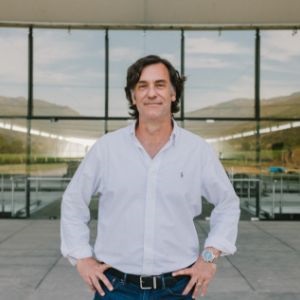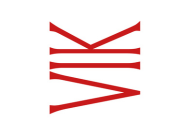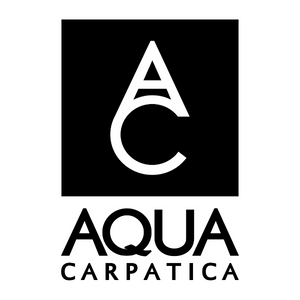‘Fire is combustion, and that is what leads to oaky flavours. I am quite fond of the sauna, and it gave me the idea that we could toast the barrels with stones. We started trials, and found great results’
At this point in our winemaking evolution – 8,000 years in – levelling up and beating the guy down the road is often a question of occasional extraordinary gifts from Mother Nature, and slight (often pricey) technical tweaks in the cellar.
These days, those tweaks often involve ageing vessels, and many attribute the changing approach to winemaking to the retirement of everyone’s favourite superhero/supervillain: Mr Robert Parker, a man credited/blamed for the rise of a certain type of big, powerful, robust wine, and one that clearly bears the imprint of the barrel – rich, smoky, oaky.
“When Mr Parker sold his guide and then retired, things began to change,” says Thomas Moussié, CEO of the Bordeaux-based cooperage Maison Moussié. “Consumers wanted fruitier and more elegant wines that were fresher and truer, instead of oaky and toastier. This is also when amphoras began appearing everywhere. During my conversations with winemakers, I realised that I had to respond to this new data. The barrel is the best tool we have to give life to wine, for 10 to 50 years. It also creates structure and texture.”
But how to deliver that ageability, structure and texture sans oak bomb? Read on for a range of innovative solutions that Moussié and others are deploying.
A new way of toasting

Moussié has worked in wine since 1999, and he saw the writing on the wall decades before everyone started talking about their love of chillable, crushable reds.
“I live for the barrel,” he confesses. “But my main target is to help my client sell more wine. If there is a change in the market for them, there is a change in mine.”
In 2005, he began thinking about how he could transmit the flavour of the wine with more transparency. By the time Parker retired and wine culture visibly shifted away from robust expressions, he was ready.
“I found that toasting barrels without fire was the answer,” Moussié says. “Fire is combustion, and that is what leads to oaky flavours. I am quite fond of the sauna, and it gave me the idea that we could toast the barrels with stones. We started trials and found great results.”
In 2018, the process of toasting barrels with lava stones was patented. Shortly after, Moussié patented barrels toasted with the semi-precious stone jade, which is an incredible conductor of heat, and is highly prized in China – a target market for many of Moussié’s clients and, therefore, Moussié himself.
“This project has been successful because it encompasses both technical and marketing aspects that work for us,” he notes. “The feedback on the quality of the barrels has been excellent. Winemakers are finding that their wines are more elegant, with all of the ageability, structure and texture. And my grand cru clients can go to China and talk to them about the jade-toasted barrels, which is a huge selling point.”
Currently, he has approximately 27 wineries in Spain, 24 in France, one in Italy, one in Argentina, five in the US and one in China using the volcanic or jade-toasting program. The specially toasted barrels cost about 20% more than fire-toasted barrels. He sold around 2,000 stone-and-gem-toasted barrels in 2022, and is on target to sell 2,500 this year.
“We’re really excited to also be bringing a big whiskey and Tequila client on,” he says. “And I can’t share details because we don’t have the patent, but we should have a new and very exciting toasting option soon. I think it will allow even more options for showing the fruit and terroir in both red and white barrel-aged wines.”
His dream? A diamond-toasted barrel.
“Diamonds transmit heat better than any other stone,” Moussié enthuses. “Unfortunately, no one has been willing to pay the $2.5 million required to toast barrels with 60 kilos of diamonds.”
Yet.
Terroir-driven barrels

Winemakers intent on evoking terroir are taking on barrel-making themselves. VIK Winery in Chile’s Millahue Valley is perched on 10,625 acres of primarily raw nature; there are 815 acres under vine, surrounded by natural landscapes composed of 12 valleys, with forest that includes 67 acres of Chilean oak trees at the property’s highest point.
“2018 changed things for me, because it was such a distinct and special vintage,” says VIK’s winemaker, Cristian Vallejo. “It showed the personality of each block in the vineyard, and I wanted to show that in the glass. I wanted zero intervention from anything outside of our estate. Everything we do is low intervention, and we use wild yeast we have here. I realised the only thing that came from outside of our estate was our French barrels.”

Vallejo went to France to learn everything he could about making barrels, from how to select parcels of trees destined for the cooperage, to how to forge and toast the barrel. After a year-long deep dive, he landed on a temporary solution that would serve as a bridge to a more permanent one.
“I began bringing over French oak, but toasting them here using our own oak from fallen branches in the forest,” Vallejo says. “It gives the flavour of the estate, the DNA of our terroir to the barrel. The oak we have in Chile is finer grained, and I have perfected the toast so it is very mild, and there are none of those vanilla and chocolate flavours. In our wine, you get only the structure and ageability, none of those extra flavours.”
Ultimately, Vallejo plans to make barrels from the oak at the winery, which, he says “is milder in terms of aromas, but is well-suited in terms of tannin management and micro-oxygenation”.
He is currently working on a plan to ensure that it is sustainable, with plans to help replant and encourage smaller trees to grow when one is removed for barrels. For now, his Chilean-toasted, French-barrelled wines are on the market; in another five, wine lovers will be able to taste VIK’s exclusively estate-grown and aged wines.
Eschewing oak

At J. Lohr, which has just over 4,000 acres under vine primarily in Paso Robles and Monterey, with 32 in St Helena, finding a less oaky barrel meant tossing oak completely.
“We wanted a fresh Sauvignon Blanc, with texture and spice, but where we could really taste the fruit,” says winemaker Steve Peck. “We found that acacia barrels with an extra light toast do that. The acacia gives us the mouthfeel we want, and a real palate weight, while still preserving the aromatics.”
Their acacia-aged Flume Crossing Sauvignon Blanc sells around 30,000 cases a year.
J. Lohr wanted to do something similar with their 500,000-case Riverstone Chardonnay, but Peck knew that only oak could deliver the results he wanted.
“We worked with Demptos to find the perfect barrel,” he says. “They created a line of barrels called Paradox that eliminates the roasty-toasty flavours, while still providing us with the benefits in terms of structure and texture.”
The cooperage’s tagline for the line is “0% toffee, 100% fruit”, with a toasting system designed to completely eliminate char and protect wood from the aromatic notes that traditional toasting impart.
“The result is a Chardonnay without any buttery or sweet notes,” Peck says. “We see the word ‘coconut’ and ‘integrated’ come up in a lot of tasting notes from critics, which we see as a compliment.”
This article first appeared on Wine-Searcher's website. Click here for the original article.

 English
English French
French



.png)


.png)





